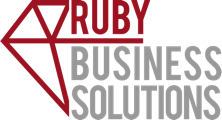- Mixing personal and business expenses
This means using your personal accounts and credit cards to pay for business expenses or vice versa. Even if you are a sole proprietor, I highly recommend that you open a separate business bank account and get a business credit card. Firstly, having a separate account and credit card just for your business makes reconciling much easier and secondly, it allows you to record all your business expenses with higher accuracy. If you are using personal accounts and credit cards, it is very easy to miss expenses that were paid for your business.
- Entering a capital asset as an expense
This usually happens because the business owner doesn’t understand the difference between the two. An expense is a day-to-day operating cost of the business whereas a capital asset is one that gives a lasting benefit or advantage for longer than a year which can include things like vehicles, furniture and fixtures and leasehold improvements. It is important these are entered correctly as you are not eligible to write off the full amount of a capital asset straight away, they must be depreciated.
- Not keeping business receipts
It is very important to keep a copy of all your business receipts as the CRA may ask to see them if they conduct an audit on your business. If you can’t provide the back-up paperwork to them, they may reassess your tax return and apply interest and penalties. I would recommend getting an app like Dext so that you can easily snap a photo straight away of any paper receipts you get and forward any email receipts directly to it. This allows you to have everything in one place, making an audit much less stressful.

Chief Executive Officer
Ruby Business Solutions







